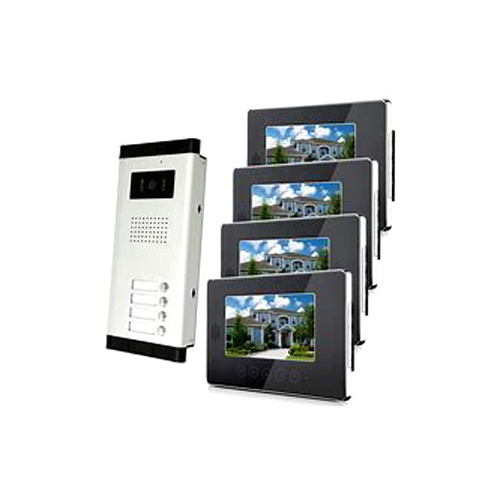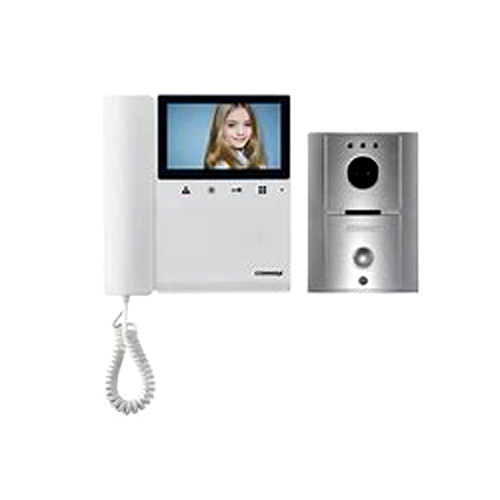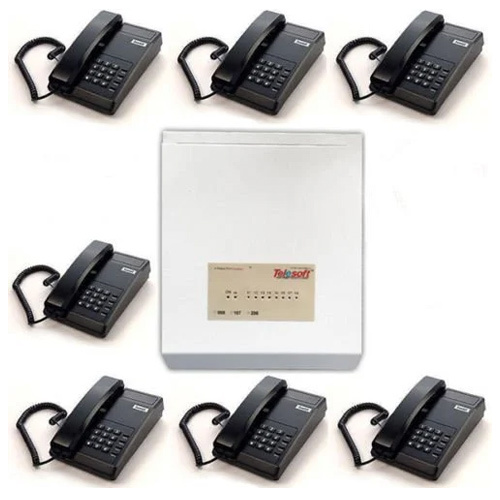Apartment Intercoms
Product Details:
- Screen Yes
- Warranty Yes
- Frequency Range (Hz) 50 Hertz (HZ)
- Color White, Black
- Feature High Quality
- Click to View more
Apartment Intercoms Price And Quantity
- 1 Unit
Apartment Intercoms Product Specifications
- 50 Hertz (HZ)
- Yes
- White, Black
- High Quality
- Yes
Apartment Intercoms Trade Information
- 100 Unit Per Month
- 7 Days
- All India
Product Description
Apartment intercom systems are essential for communication between residents and visitors, providing both convenience and security. The specifications of an apartment intercom system can vary depending on the technology used, the size of the building, and the features required. Below are some key specifications typically considered when designing or selecting an apartment intercom system:
1. Type of Intercom System
- Audio Intercom: Simple two-way audio communication between the resident and the visitor.
- Video Intercom: Allows both audio and video communication, providing a visual display of visitors (common in modern systems).
- Wireless Intercom: Works via Wi-Fi or other wireless technologies, offering flexibility in installation.
- Wired Intercom: Requires physical cabling between the units and the entrance panel.
- Smart Intercom: Integrates with smartphones or tablets, allowing residents to monitor and interact with visitors remotely.
2. Features and Functionality
- Two-way Communication: Both the resident and the visitor can speak and listen to each other.
- Video Display: A screen for the resident to view the visitor, usually integrated with a camera at the entrance.
- Remote Unlocking: Ability to unlock the door from inside the apartment (for video/audio intercom systems).
- Do Not Disturb Mode: Allows residents to mute calls when they are unavailable.
- Call Recording: For security purposes, some systems allow recording of communication with visitors.
- Multiple Units: Some systems support multiple internal stations, allowing communication between different apartments or floors.
- Hands-free Operation: Residents can operate the intercom without needing to physically press buttons, using voice commands or motion sensors.
3. Installation and Connectivity
- Wired Systems: Requires cables to be run through the building, which can be labor-intensive but offers stable communication.
- Wireless Systems: Easier to install, but might suffer from connectivity issues depending on the building structure and distance between devices.
- IP-based Systems: Uses the building™s internet network to send and receive communication, providing more flexibility and additional features like remote access.
- Power Supply: Most systems are powered by low-voltage DC power or PoE (Power over Ethernet) for IP-based systems.
4. Camera and Visual Capabilities
- Camera Resolution: Higher resolution cameras provide clearer images. Common options are 720p (HD) or 1080p (Full HD).
- Night Vision: Essential for low-light conditions, allowing visitors to be seen at night or in poorly lit areas.
- Wide-angle Lens: Helps capture a broader area around the entrance, providing a better view of visitors.
5. User Interface
- Touchscreen Interface: Allows users to easily interact with the system, including viewing video, unlocking the door, and adjusting settings.
- Physical Buttons: Some systems still use traditional buttons for operation, which might be preferred in simpler systems.
- Mobile App Control: For smart intercom systems, a mobile app can provide remote access to features such as video monitoring, door unlocking, and communication.
6. Security Features
- Encrypted Communication: Ensures that the communication between the entrance panel and the resident is secure, protecting against eavesdropping.
- Access Control Integration: Integration with keyless entry systems, allowing residents to open doors remotely.
- Visitor Logs: Some systems can keep a record of all incoming visitors, including time and date stamps.
- Tamper Detection: Alerts if someone tries to tamper with or disable the intercom system.
7. Compatibility
- Integration with Home Automation: For smart systems, the intercom can integrate with home automation setups like smart lighting, HVAC systems, or security systems.
- Building Management Systems (BMS): In larger buildings or complexes, intercom systems can be integrated with BMS for centralized control.
- Third-party Smart Devices: Some modern systems allow interaction with other smart devices such as Alexa, Google Assistant, or other smart hubs.
8. Audio Specifications
- Speaker Quality: Clear and loud audio for communication.
- Microphone Sensitivity: High-quality microphones that pick up voices clearly from the visitor side without distortion.
- Volume Control: Adjustable audio volume for different environments.
9. Durability and Weather Resistance
- Weatherproofing: For outdoor units, ensuring the system can withstand rain, snow, and other environmental conditions.
- Material: Durable materials like aluminum, stainless steel, or reinforced plastic for exterior units.
10. Maintenance and Support
- Easy Software Updates: For video and smart intercoms, software updates can be pushed remotely, keeping the system secure and up to date.
- Serviceability: Ensure that parts are easily replaceable or repairable if there are malfunctions.
11. Power Backup
- Battery Backup: For wired systems, ensuring that the intercom continues to work during power outages.
- Low Power Consumption: Important for systems that need to operate on battery power.
12. Cost and Scalability
- Scalability: Some intercom systems are designed for small buildings, while others can scale for large apartment complexes with hundreds of units.
- Cost: Prices vary widely depending on the features, complexity, and brand, with smart systems usually being more expensive than simple audio intercoms.
13. Compliance
- Regulatory Compliance: Ensure the system complies with local regulations, such as fire codes, accessibility standards, or data privacy laws (such as GDPR if applicable).
Conclusion:
Selecting the right apartment intercom system depends on factors such as the building's needs, the level of security desired, budget, and the preference for technology (traditional vs. smart). A well-designed intercom system can enhance security, convenience, and the overall living experience in an apartment building.

Price:
- 50
- 100
- 200
- 250
- 500
- 1000+








 Send Inquiry
Send Inquiry Call Me Free
Call Me Free